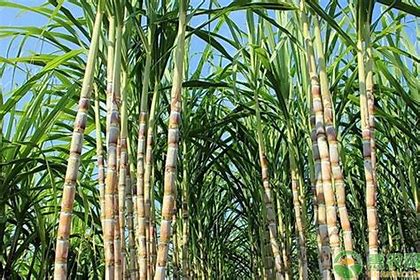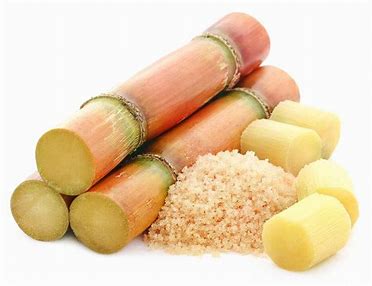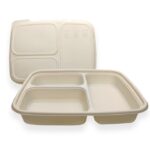Quick Summary
Sugarcane, one of the world’s oldest cultivated crops, plays a vital role in food, energy, and sustainable material industries. Beyond sugar and ethanol, sugarcane bagasse—a fibrous by-product—has become an eco-friendly solution for packaging, offering a biodegradable alternative to plastic. Companies like DASHAN are advancing this trend by producing sustainable bagasse tableware for global foodservice applications.
Introduction
Sugarcane, a tall perennial grass native to Southeast Asia, has shaped economies, societies, and dietary habits across centuries. Its sweet juice laid the foundation for the sugar industry, fueling trade, colonial expansion, and industrialization. Today, sugarcane is not only a source of sugar but also a remarkable crop with impressive biological features, rapid growth capacity, and diverse byproducts. Among these byproducts, bagasse—the fibrous residue left after juice extraction—has become a cornerstone of sustainable innovation. This article provides a comprehensive exploration of sugarcane’s biology, history, and ecological significance, before shifting toward its modern role in eco-friendly product development, including the bagasse-based solutions championed by companies like DASHAN.

1. The Botanical and Biological Profile of Sugarcane

Sugarcane belongs to the genus Saccharum, which comprises several species and hybrids cultivated for commercial production. It is a C4 plant, which means it utilizes an efficient photosynthetic pathway allowing for high productivity even in hot and sunny climates.
-
Morphology: The plant features stout stalks that can grow between 2 to 6 meters in height. These stalks store sucrose in their fibrous tissues, which are later extracted during processing.
-
Root system: Sugarcane develops a deep and fibrous root network that aids in water and nutrient absorption, giving it adaptability to diverse soil conditions.
-
Life cycle: Unlike annual crops, sugarcane can regenerate through ratooning. After harvesting, the stubble left behind grows into new stalks, reducing replanting costs and maximizing land productivity.
2. Historical Importance of Sugarcane
The journey of sugarcane is as fascinating as the crop itself. Originating in Southeast Asia, sugarcane spread to India, where refining methods were first developed. From there, it reached Persia and later Europe during the medieval period.
By the 15th century, colonial powers recognized sugarcane’s immense commercial value, leading to the establishment of plantations across the Caribbean, Brazil, and parts of Africa. These plantations reshaped global trade but also had dark ties to slavery and forced labor.
Despite its controversial past, sugarcane became one of the world’s most traded commodities, and it remains a cornerstone of agricultural economies in tropical and subtropical regions.
3. Growth Dynamics and Scientific Insights
Sugarcane’s rapid growth rate distinguishes it from many other crops. Under optimal conditions, some varieties can grow nearly 1.3 meters within a few months. Several scientific factors explain this phenomenon:
3.1 Genetic Variability
Different sugarcane cultivars exhibit varying responses to environmental conditions. Breeding programs have created hybrids with enhanced disease resistance, drought tolerance, and higher sucrose content.
3.2 Photosynthetic Efficiency
Being a C4 plant, sugarcane converts carbon dioxide into energy with exceptional efficiency. This capability allows for robust biomass accumulation, which is why sugarcane is not only used for sugar but also for ethanol production and renewable energy.
3.3 Leaf Area Index (LAI)
LAI measures the leaf area relative to ground coverage. In sugarcane, a high LAI supports efficient light absorption, fueling rapid growth and higher yields.
3.4 Ratooning Ability
One of sugarcane’s unique traits is its capacity for ratooning. Farmers can harvest cane multiple times from the same root system, often up to four cycles, before replanting becomes necessary. This reduces labor costs and supports sustainable farming practices.
4. Environmental Conditions for Optimal Growth
Sugarcane thrives in tropical and subtropical climates, typically between 30°N and 30°S latitudes.
-
Temperature: Ideal range is 20–30°C, though certain cultivars tolerate hotter conditions.
-
Rainfall: Requires 1500–2500 mm of annual rainfall, though irrigation can compensate in arid areas.
-
Soil: Prefers deep, well-drained alluvial soils, but adapts to diverse soil types with proper fertilization.
Challenges such as drought stress, soil degradation, and climate variability remain critical concerns, prompting innovations in agronomy and water management.
5. Sugarcane and Global Economy
Sugarcane accounts for nearly 80% of the world’s sugar production. Brazil, India, China, and Thailand dominate the market. Beyond sugar, the crop fuels other industries:
-
Ethanol: A renewable fuel widely used in Brazil.
-
Molasses: A byproduct used in fermentation industries.
-
Electricity: Bagasse is burned in cogeneration plants to produce renewable energy.
This versatility cements sugarcane’s role in global sustainability discussions, particularly as the world transitions to greener energy and biodegradable materials.
6. Bagasse: From Waste to Resource
After juice extraction, sugarcane leaves behind bagasse, a fibrous material that once posed disposal challenges. Today, bagasse is celebrated as a sustainable raw material with multiple applications.
6.1 Paper and Pulp Industry
Bagasse fibers substitute wood pulp, reducing deforestation. Paper, cardboard, and stationery produced from bagasse are increasingly common in eco-conscious markets.
6.2 Renewable Energy
In many sugar mills, bagasse is used to generate heat and electricity through cogeneration. This not only powers the mills but also supplies energy to local grids, reducing dependence on fossil fuels.
6.3 Eco-Friendly Packaging and Tableware
One of the most transformative uses of bagasse lies in biodegradable packaging. Bagasse plates, bowls, clamshell boxes, and food trays are durable, microwave-safe, and compostable. They provide an excellent alternative to plastic and Styrofoam.
Here is where companies like DASHAN step in. By producing bagasse-based lunch boxes, trays, and plates, DASHAN demonstrates how agricultural byproducts can fuel a circular economy. Their products cater to restaurants, supermarkets, and food delivery services seeking eco-friendly packaging.
7. Scientific and Market Recognition of Bagasse Products
The global bagasse products market is expanding rapidly. Reports indicate double-digit growth rates driven by plastic bans and consumer awareness. Governments and corporations alike are investing in these sustainable solutions.

Bagasse products are recognized for several advantages:
-
Biodegradability: Decompose within 60–90 days in composting environments.
-
Food safety: Resistant to grease and high temperatures, safe for direct food contact.
-
Versatility: Available in various shapes and sizes, catering to diverse foodservice needs.
DASHAN, among other innovators, is actively contributing to this trend by promoting compostable packaging solutions that align with environmental regulations worldwide.
8. Cultural and Social Significance of Sugarcane
Sugarcane is not just an economic crop; it holds cultural symbolism in many regions. In India, it is central to festivals like Pongal and Makar Sankranti. In Brazil, sugarcane spirit (cachaça) is part of national heritage.
This deep-rooted presence in traditions reflects the crop’s enduring importance. Extending this cultural value into sustainable innovations ensures that sugarcane continues to be a symbol of both prosperity and responsibility.
9. The Future of Sugarcane in Sustainability
Looking ahead, sugarcane’s potential extends beyond traditional sugar and bagasse products. Researchers are exploring new applications:
-
Bioplastics: Extracting bio-polymers from sugarcane for plastic alternatives.
-
Biochar: Converting bagasse into soil-enhancing carbon material.
-
Advanced biofuels: Beyond ethanol, future technologies may unlock jet fuels derived from sugarcane.
The integration of companies like DASHAN into this evolving ecosystem signals a shift toward industrial symbiosis, where nothing from sugarcane goes to waste.
FAQ
1. What is sugarcane bagasse and why is it important?
Sugarcane bagasse is the fibrous residue left after extracting juice from sugarcane. It is important because it can be repurposed into eco-friendly products such as biodegradable tableware, helping reduce plastic waste.
2. How are bagasse products better than plastic alternatives?
Unlike plastic, bagasse products are compostable, biodegradable, and made from renewable resources. They naturally decompose without releasing harmful toxins, making them safer for the environment.
3. Can bagasse plates and lunch boxes handle hot and oily foods?
Yes. Bagasse products are durable, heat-resistant, and grease-proof, making them suitable for hot, cold, and even oily foods without losing strength or shape.
4. Why is sugarcane considered a sustainable crop?
Sugarcane grows quickly, requires relatively low inputs, and can be harvested multiple times from the same root system. Its by-products, such as bagasse, add value by creating renewable packaging solutions.
5. Where can I find reliable bagasse packaging solutions?
Companies like DASHAN specialize in manufacturing sugarcane bagasse trays, plates, and lunch boxes that meet international food safety standards while supporting sustainable business practices.
Conclusion
Sugarcane is more than just a source of sweetness; it represents a bridge between tradition and modern sustainability. By transforming bagasse into eco-friendly packaging, the industry reduces waste, lowers carbon emissions, and helps replace single-use plastics. With the growing demand for green alternatives, DASHAN’s bagasse products stand out as innovative, safe, and responsible solutions for restaurants, supermarkets, and takeaway businesses worldwide. Choosing bagasse is not only an environmental decision but also a forward-looking investment in a sustainable future.
References
-
Food and Agriculture Organization of the United Nations (FAO). https://www.fao.org
-
International Sugar Organization (ISO). https://www.isosugar.org
-
United Nations Environment Programme (UNEP) – Single-Use Plastics Report. https://www.unep.org
-
National Renewable Energy Laboratory (NREL) – Biomass Research. https://www.nrel.gov
-
World Wildlife Fund (WWF) – Sustainable Agriculture. https://www.worldwildlife.org




